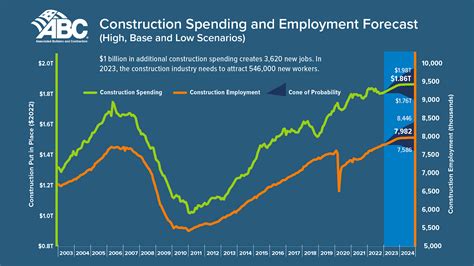
In the ever-evolving landscape of construction financing, understanding how market trends influence construction loan rates is essential for builders and investors alike. As economic conditions shift, indicators such as inflation, interest rates, and housing demand play crucial roles in determining the cost of borrowing money for construction projects.
This article delves into these economic indicators, identifies significant market trends, and analyzes historical data to provide insights into how these factors contribute to fluctuations in loan rates. Additionally, we will explore regional variations in construction loan rates and examine the impact of supply and demand on loan availability. By arming yourself with this knowledge, you can make informed financial decisions that drive your construction ventures towards success.
Understanding How Economic Indicators Influence Construction Loan Rates
Economic indicators play a significant role in shaping the construction loan landscape. By examining these indicators, lenders can gauge the overall health of the economy and make informed decisions about loan rates. Here are some key economic indicators and their impact on construction loan rates:
- Gross Domestic Product (GDP): A growing GDP typically signals a robust economy, which can lead to lower construction loan rates as lenders become more confident in borrowers’ ability to repay loans.
- Unemployment Rate: A low unemployment rate usually suggests a stable economy. This stability tends to drive down interest rates, making construction financing more attractive.
- Inflation Rates: High inflation can lead to increased interest rates. Lenders often raise construction loan rates to offset the risk of declining purchasing power over time.
- Federal Reserve Policies: The Federal Reserve’s monetary policies, including interest rate adjustments, directly affect the borrowing landscape, influencing construction loan rates accordingly.
- Consumer Confidence Index (CCI): A high CCI can indicate that consumers feel secure in their financial situations, encouraging borrowing and lending. This can result in lower construction loan rates as demand increases.
By understanding how these economic indicators influence construction loan rates, borrowers can make more informed decisions about the timing and structure of their loans. This insight also helps lenders better assess risk and develop competitive loan offerings in a shifting market.
Identifying Market Trends That Affect Construction Loan Interest Rates
Construction loan interest rates are significantly influenced by various market trends. Understanding these trends is crucial for borrowers aiming to secure favorable loan conditions. Here are some key trends that can impact construction loan rates:

- Influence of the Federal Reserve: The actions taken by the Federal Reserve, such as changes in the federal funds rate, can ripple through financial markets, affecting the interest rates on construction loans. A rate hike generally leads to increased borrowing costs.
- Real Estate Market Dynamics: Fluctuations in real estate prices and demand for new housing can create upward or downward pressure on construction loan rates. A booming market often results in higher rates due to increased demand.
- Inflation Trends: Ongoing inflation can lead to increased costs for materials and labor, prompting lenders to adjust their rates to mitigate risk.
- Economic Growth or Recession: In periods of economic growth, lenders may be more willing to extend favorable rates due to increased consumer confidence. Conversely, during a recession, lenders may tighten their lending standards, leading to higher interest rates.
- Geopolitical Factors: International events and uncertainties can affect the financial markets and, in turn, impact interest rates. For instance, trade wars or political instability may lead to volatility in financial markets, influencing construction loan interest rates.
- Technological Advancements: Innovations in construction technology can lower overall costs and influence market trends, subsequently impacting loan interest rates. Lenders may adjust rates based on projections of how these advancements affect the market.
By understanding how these market trends interact, borrowers can better navigate the construction loan landscape and make informed decisions regarding their financing options.
Analyzing Historical Data to Predict Loan Rate Changes
To effectively understand how market trends influence construction loan rates, it’s essential to analyze historical data. This analysis can provide invaluable insights into how past trends have shaped current lending environments. By studying loan rate fluctuations over the years, we can identify patterns that are likely to repeat under similar economic conditions.
One critical approach is examining economic cycles, including periods of growth and recession. During economic upturns, lower unemployment rates and increased consumer confidence typically lead to higher demand for construction projects. This increased demand often results in rising construction loan rates. Conversely, during economic downturns, a decline in construction projects reduces the demand for loans, which can lower interest rates.
Additionally, utilizing tools like trend lines and moving averages can help predict future loan rate changes. For instance, if historical data shows a consistent upward trend in loan rates coinciding with rising construction activity, similar future increases can be anticipated.
Another factor to consider is external influences such as government policies, interest rate adjustments by the Federal Reserve, and global economic events that have historically impacted construction financing. By contextualizing these factors within historical data, we can enhance our understanding of how they may affect loan rates moving forward.
Analyzing historical data not only sheds light on how previous trends shape current conditions but also provides a framework for understanding how to anticipate future changes in construction loan rates. This proactive approach empowers stakeholders to make more informed decisions in a dynamic market.

Exploring Regional Variations in Construction Loan Rates
When it comes to financing construction projects, one critical factor that can influence the costs significantly is the variation in construction loan rates across different regions. Understanding how market trends and local economic conditions impact these rates is essential for borrowers looking to optimize their financing options.
Construction loan rates can differ substantially by geography due to several factors, including:
- Local Economic Conditions: The economic health of a specific area plays a crucial role in determining interest rates. In regions with a strong job market and population growth, lenders may offer lower rates due to increased competition and a robust demand for housing.
- Regulatory Environment: Local regulations, including zoning laws and building codes, can affect the cost of construction and subsequently influence loan rates. Areas with more favorable regulations may attract more developers, driving down rates.
- Lending Competition: The number of financial institutions operating in a particular region affects the rates offered. More competition often leads to better rates and terms for borrowers.
- Geographical Risk Factors: Areas prone to natural disasters or economic downturns may see higher rates as lenders account for the added risk associated with financing projects in those regions.
Additionally, understanding how local trends relating to supply and demand, construction costs, and real estate values can provide crucial insights into the variability of construction loan rates. Monitoring these factors continually can help borrowers make informed decisions about when and where to secure their loans.
By evaluating these regional variations, borrowers can better position themselves to take advantage of favorable conditions and potentially save money on their construction projects.
Understanding How Supply and Demand Impact Construction Loan Availability
The availability of construction loans is significantly influenced by the principles of supply and demand within the financial and real estate markets. When understanding how these dynamics work, it becomes clear that various factors can either tighten or loosen the availability of funds for construction projects.
Firstly, during periods of high demand for construction, such as a booming real estate market, lenders may see an influx of loan applications. If the demand for construction loans surpasses the supply of available capital, lenders might raise interest rates to balance the situation. Conversely, during a decline in demand, there may be a surplus of funds, leading lenders to offer more favorable rates to attract borrowers.
Moreover, the overall economic climate plays a critical role. In times of economic growth, job creation and increasing consumer confidence can elevate the demand for new homes and, consequently, construction loans. This heightened demand can lead lenders to impose stricter borrowing criteria due to perceived risks associated with a potentially overheated market.
On the other hand, during economic downturns, demand for construction loans generally wanes as individuals and businesses may pull back on investment plans. In these situations, lenders often find themselves with excess liquidity and may lower interest rates and ease borrowing requirements to stimulate activity in the market.

In addition, regulatory changes and government policies can influence the supply of construction loans. For example, initiatives aimed at increasing housing development can lead to an expansion in construction loan options, while stricter lending regulations can limit access to these funds.
Understanding how supply and demand influence construction loan availability is crucial for both borrowers and lenders. By keeping an eye on market trends and economic indicators, stakeholders can better navigate the complexities of securing financing for construction projects, ensuring they make informed decisions that align with current market conditions.
Frequently Asked Questions
What are construction loan rates?
Construction loan rates are interest rates applied to loans taken out for the purpose of building or renovating a property. These rates can vary based on several economic factors.
How do market trends influence construction loan rates?
Market trends affect construction loan rates primarily through supply and demand dynamics, inflation expectations, and the overall economic climate. When demand for construction is high, rates tend to increase.
What specific market trends should borrowers look out for?
Borrowers should monitor trends such as interest rate changes by the Federal Reserve, housing market demands, and economic reports that indicate growth or recession projections.
Can construction loan rates fluctuate during the loan process?
Yes, construction loan rates can fluctuate if they are variable-rate loans. Borrowers should be aware that rates may change from the time of application to the closing of the loan.
How can borrowers mitigate the impact of rising construction loan rates?
Borrowers can mitigate the impact by locking in rates early on, comparing different lenders, and considering fixed-rate construction loans.
What role does the economy play in construction loan rates?
The economy plays a crucial role; in a strong economy, increased demand for construction can lead to higher rates, while in a weak economy, rates may lower to stimulate growth.
Are there seasonal trends that affect construction loan rates?
Yes, seasonal trends can affect construction loan rates. Typically, construction activity increases in the warmer months, potentially leading to higher demand and higher rates.

Leave a Reply